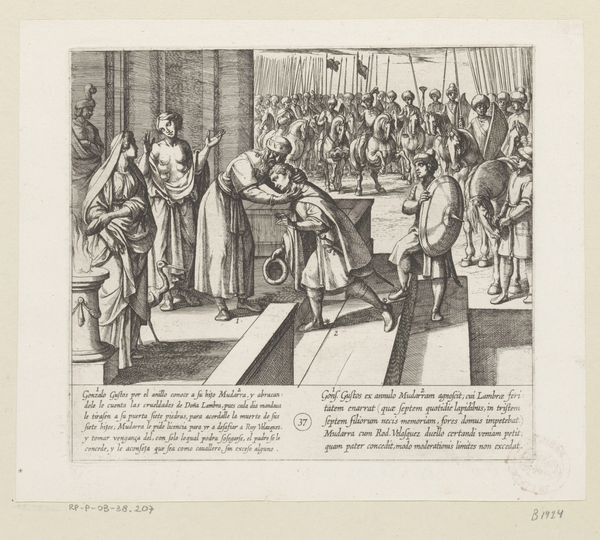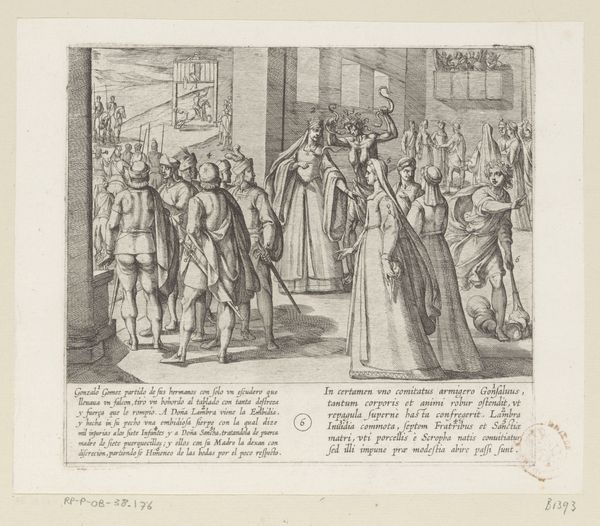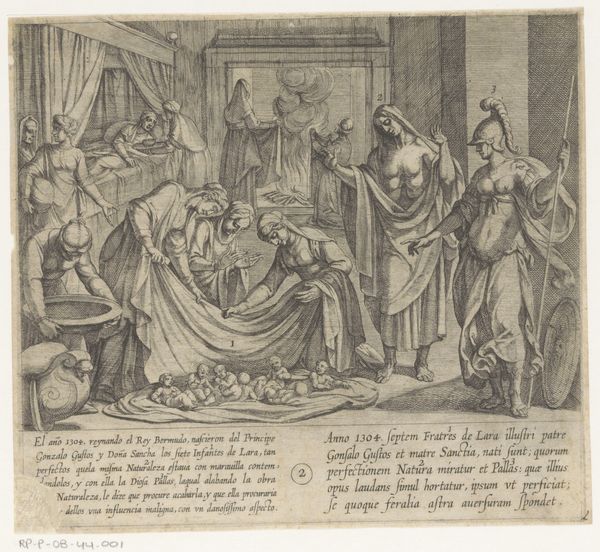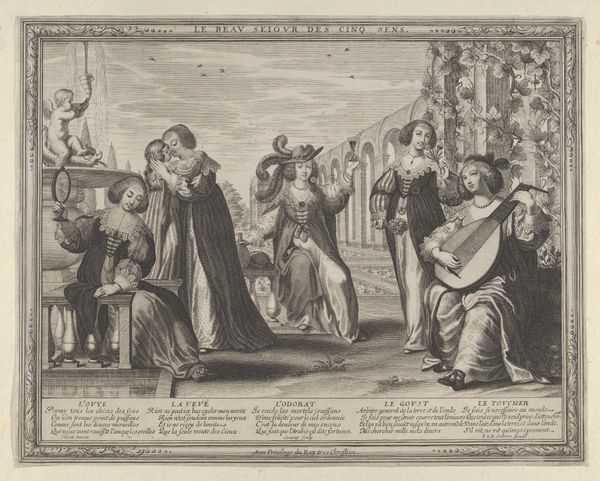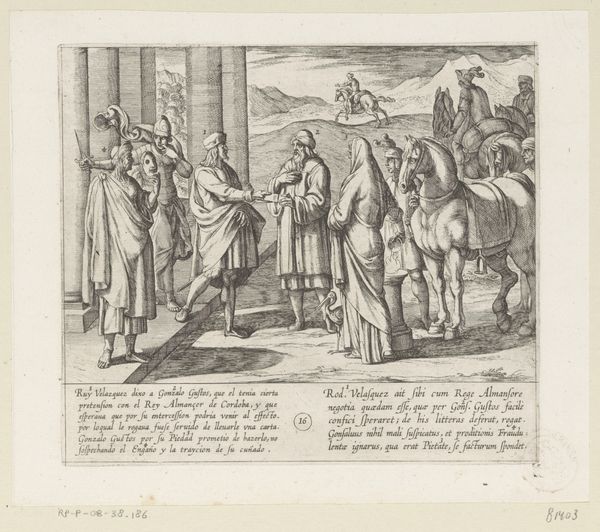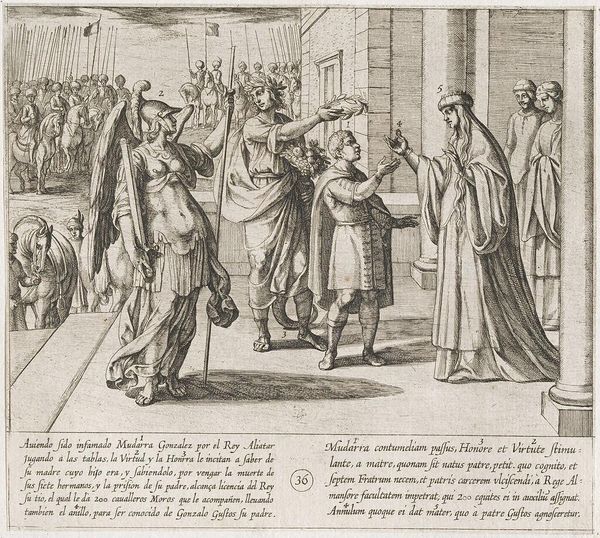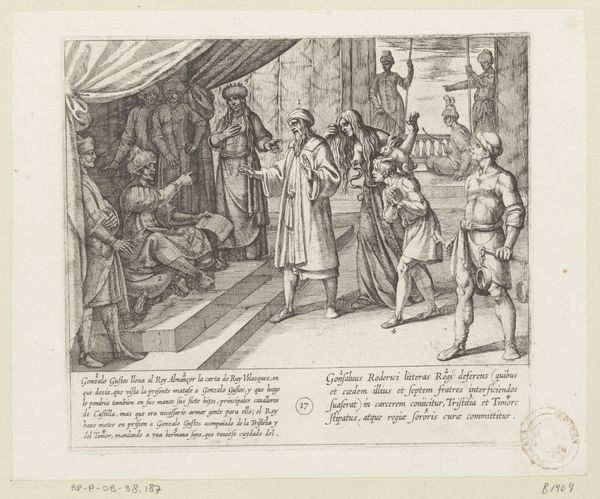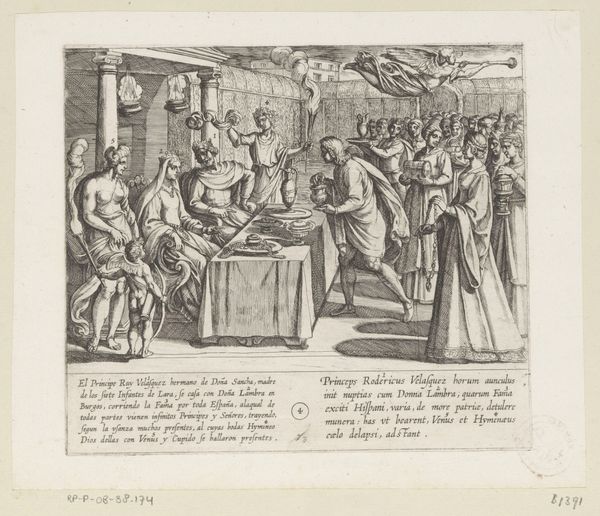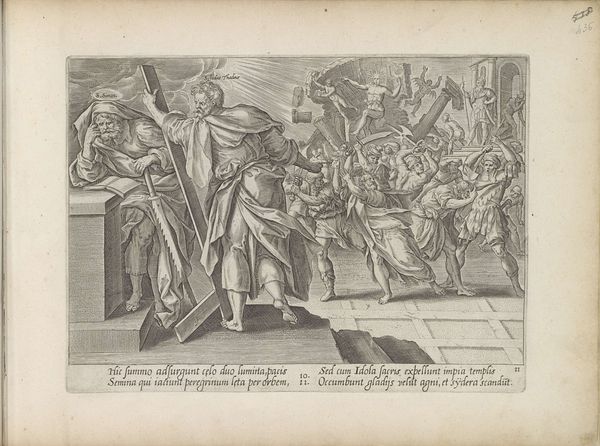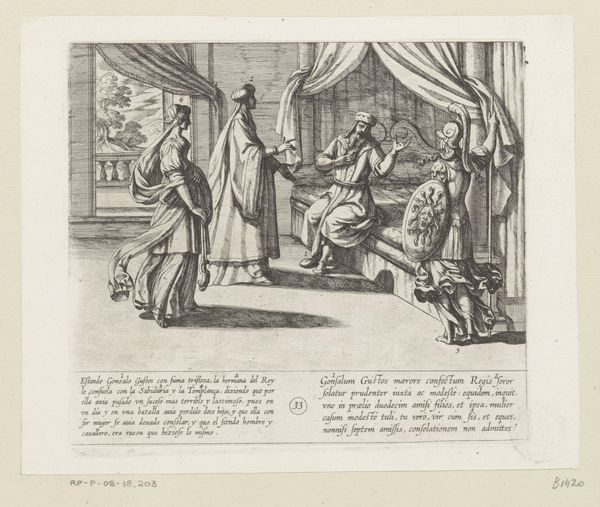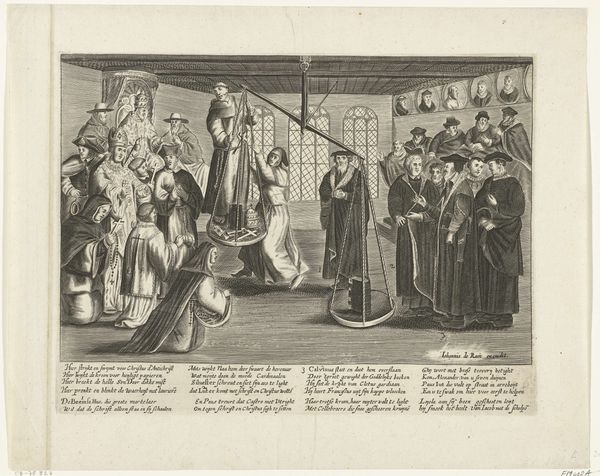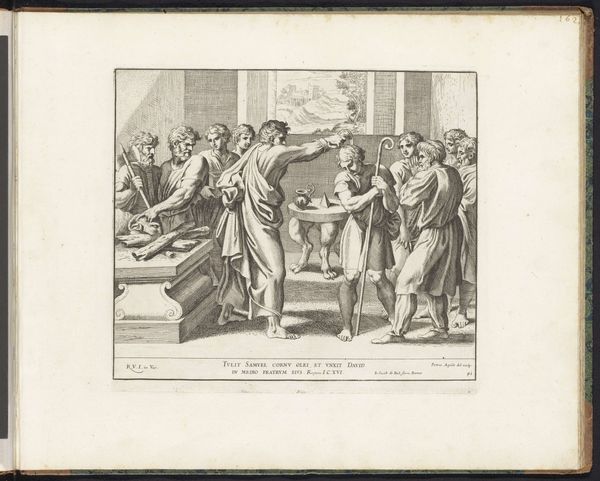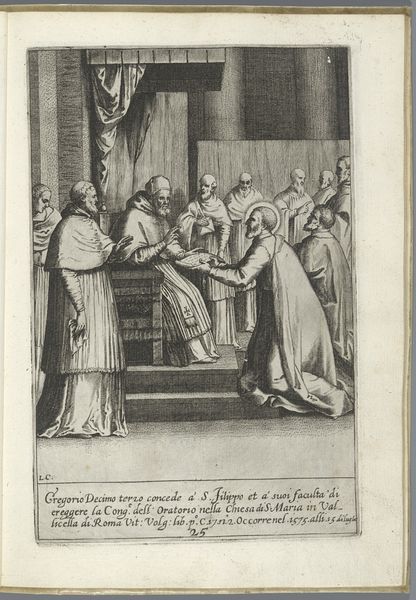
Mudarra neemt afscheid van zijn moeder en gaat zijn vader zoeken 1612
0:00
0:00
antoniotempesta
Rijksmuseum
print, engraving
#
narrative-art
#
baroque
# print
#
history-painting
#
engraving
Dimensions: height 185 mm, width 206 mm
Copyright: Rijks Museum: Open Domain
Curator: Here we have a 17th-century print, created in 1612 by Antonio Tempesta. Its full title, in Dutch, is "Mudarra neemt afscheid van zijn moeder en gaat zijn vader zoeken"—"Mudarra Takes Leave of his Mother and Goes in Search of his Father." It's an engraving, currently housed at the Rijksmuseum. Editor: Immediately, what strikes me is the stark contrast. It’s busy yet static. A small, dramatic scene unfolding in the foreground against the backdrop of this stoic, almost overwhelming army of figures with raised spears. There’s this intense feeling of farewell and departure. Curator: Indeed. Tempesta has chosen a specific moment within a longer narrative, a popular story from Spanish balladry concerning Mudarra González. Here, he’s taking leave of his mother to seek justice for his father's imprisonment and the death of his seven half-brothers. It speaks to themes of honor and filial duty prevalent in that era. Editor: And it’s cleverly staged, isn't it? We have Virtue and Honor guiding him on one side, a gift presented to him on the other...it’s a complex balance of personal struggle and public expectation. This feels less like an intimate farewell and more like a young man’s oath. The artist captures it well using light. Note the engraving, but almost painterly depiction of light versus shade in this otherwise line-dominated technique. Curator: I'd agree. Tempesta also highlights the political dimensions. Mudarra’s story was often employed to illustrate dynastic legitimacy, the acceptance and control of mixed ancestry that were essential for political claims at that time. Mudarra's complex family history mirrors these societal tensions. He becomes a symbolic figure in Spain's long history. Editor: That tension is absolutely there in the composition. Mudarra seems caught between these almost opposing forces: the private realm of his mother and this grand, potentially violent destiny calling him forward. As you point out, there are very specific cultural undertones that might escape someone looking at it for the first time. Curator: Precisely. The image allows us to examine the intersections of family obligation, political machinations, and, above all, cultural expectations. A single engraving can act as a window onto a whole historical world. Editor: And for me, it remains a poignant study in courage and purpose. The visual drama reminds me of the old saying "goodbye is the hardest word." Thanks for taking us on a little visual and historical journey. Curator: My pleasure. A complex story elegantly captured, I'd say.
Comments
No comments
Be the first to comment and join the conversation on the ultimate creative platform.
